His work proceeds by having a canvas placed on the floor and adding one page and another while circling the canvas, as done in a ritual. Quite often, new drawings are added between other drawings. One plate has one ‘being’, and if the ‘beings’ do not submerge amidst the semi-abstract spots, the work is removed. The artist terms this entire process a ‘summoning’.
Common objects which often appear in the paintings are hands, feet, organs, muscles, and eyes. These objects dissolute and newly combine with each other to express a novel will, direction, and creativeness. The hands and feet resemble the genuine given will to humans, which cannot be dismembered. The organs and muscle stems depict the self-reflecting memories the artist has while indicating the objects within the human body. They also convey a physical system that has been given to humans as a direction or course of life. And the eyes represent the existence which was the receiver of the will and its directions.
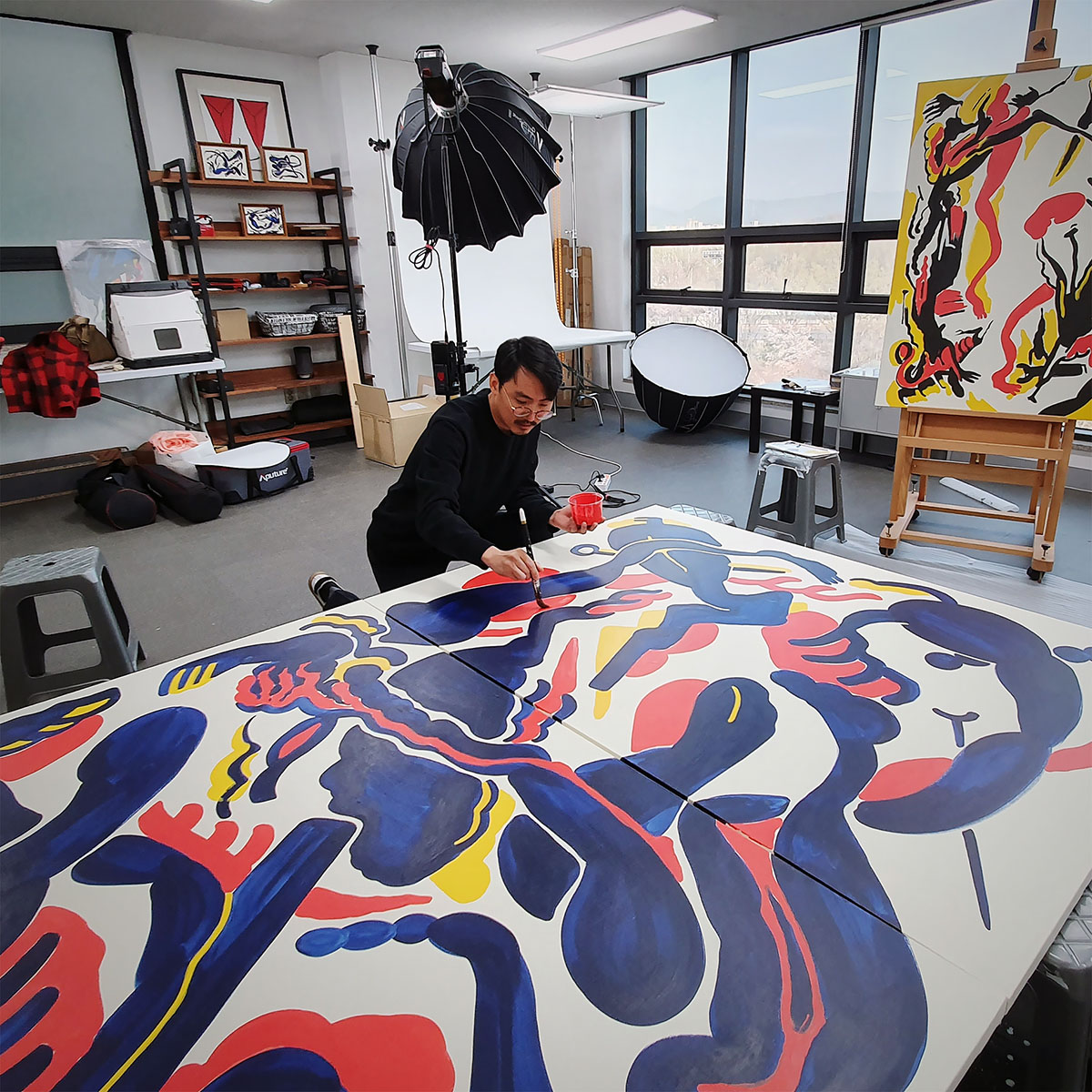
Jun-won Lee was influenced by works of surreal automatism, abstract expressionists who were based in New York such as Paul Jackson Pollock, German neo-expressionists including A.R Penk, and Georg Baselitz, and Joan Miró i Ferrà.
He also considers the works during the ‘Nose art’ movement after World War 2, the ‘Irezumi tattoos’ by the Yakuza, and the war paintings of historical ‘barbarians’ as a source of inspiration, due to their shared notions of art as an expression of people who face death as a way of life.
What’s your background? When did you discover art?
I obtain archaic inspiration and spiritual energies through art. Rather than drawing paintings, I consider it an act of creation or salvaging something which already exists. Through this, I desire to cut off what restrains me and become freer. I consider my attitude towards this act of art, as my art.
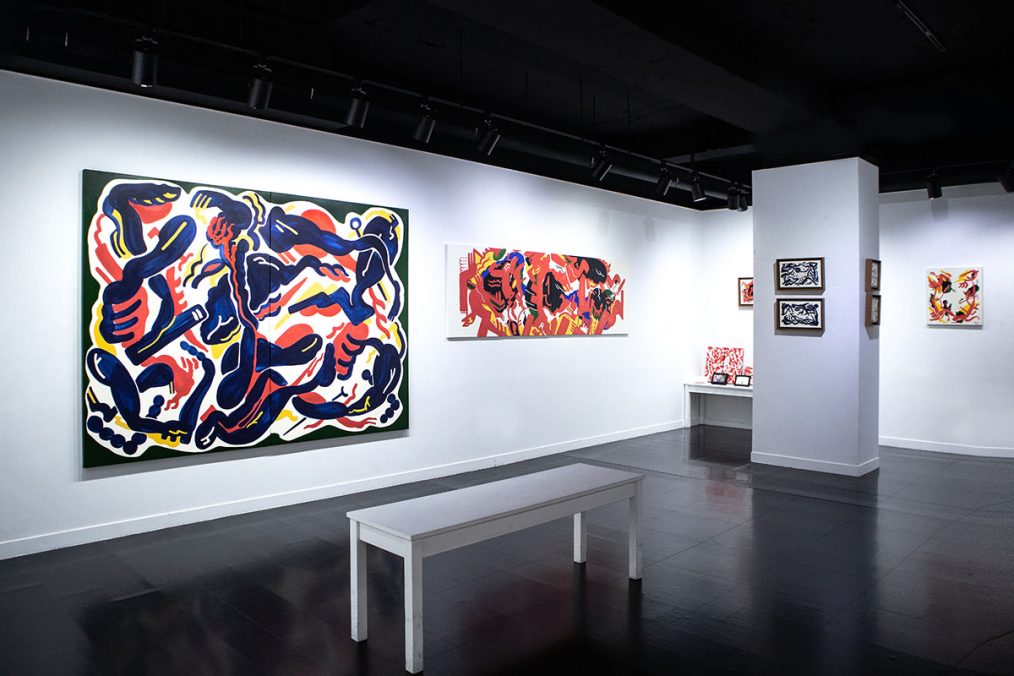
Lee Junwon Contemporary Artist based in Seoul 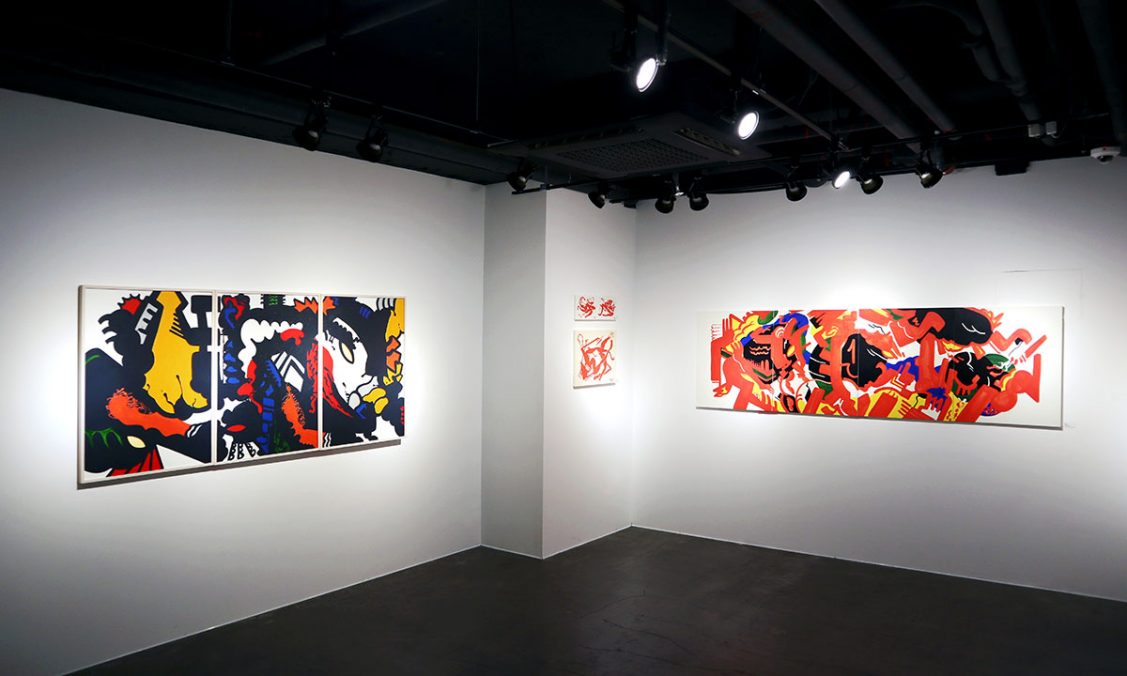
Lee Junwon Contemporary Artist based in Seoul
How was your time at Chung-ang College of Art?
I graduated from the College of Art with a diploma in design. During my time there, I realized that designing goes a lot further than just creating something appealing. I took it as a plan or project and believed that this definition of design leads to conceptual art. And so, I devoted myself to practising genuine ideas. To name some, I used a large speaker in front of my campus building to turn on songs that I wrote, and made people turn on and off the lights in campus, according to the music.
It was a work of conceptual installation art when the lights were dancing by the music, and I told my directing professor that it was a performance in line with the marketing plans for the iPod. As a result, he gave me an A. It is still the largest work I have ever done.
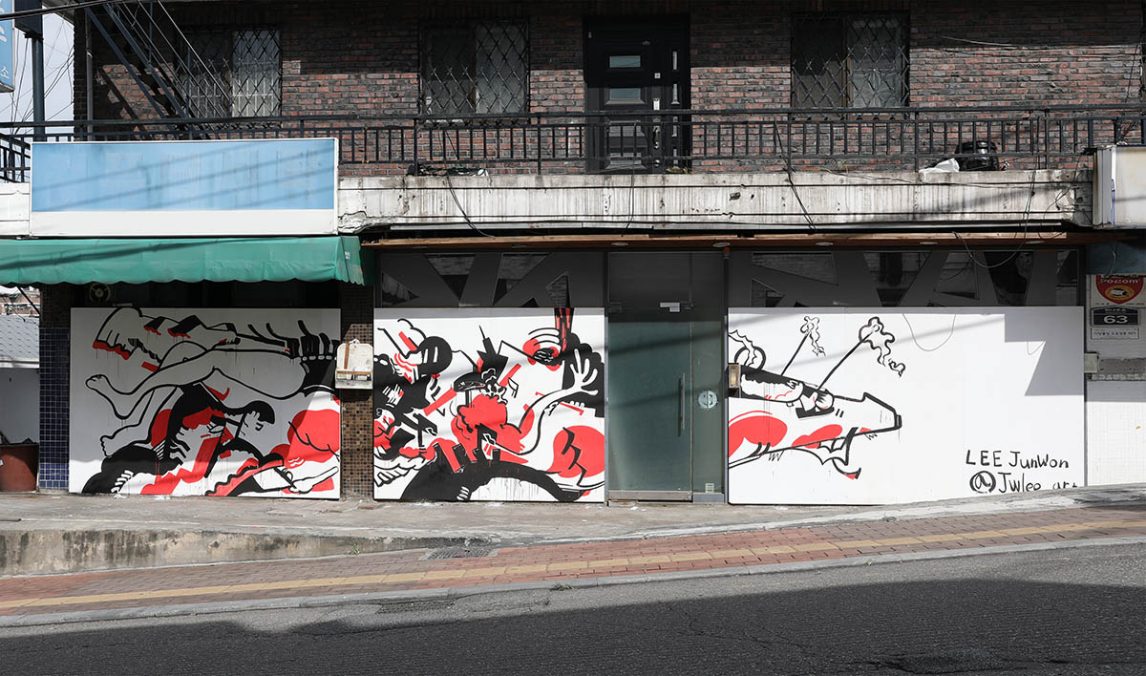
Do you have a favorite color?
I do not hesitate using fundamental colors. I place them so that they do not lose their innate energy. In my viewpoint, there are no ‘beautiful colors’. It is lies at the basics, and if colors are placed rightfully, they stay beautiful and powerful.
How were the past months for you personally?
I spent the last few months preparing for my “Inner Dance” exhibition. Every work was new, and as a result, the reception was better than I expected! A few notable painters and profound actors came by with surprise and complimented my work, and bought a few. It was a moment that paid off for the time and effort I invested during the last few months. I also managed to fancy my workplace or as some may call it, my atelier. It’s underground and quite ‘hip’. I installed some moving-head lights which I sometimes use for my work because the beating and lights make me absorbed in my work. I named it ‘The Cave’, since I am after all painting archaic images there.
Can you tell us something about your Solo Exhibition „INNER DANCE“?
My work conveys archaic movements. These movements are like communal dances which make our common belief more solid. Some say that they resemble ancient battles and something sexual, and others often say that when they see my creations, it is like seeing a scene of primitive people dancing primitive dances. Which is exactly what I intended in this exhibition, and I’m extremely grateful for that.
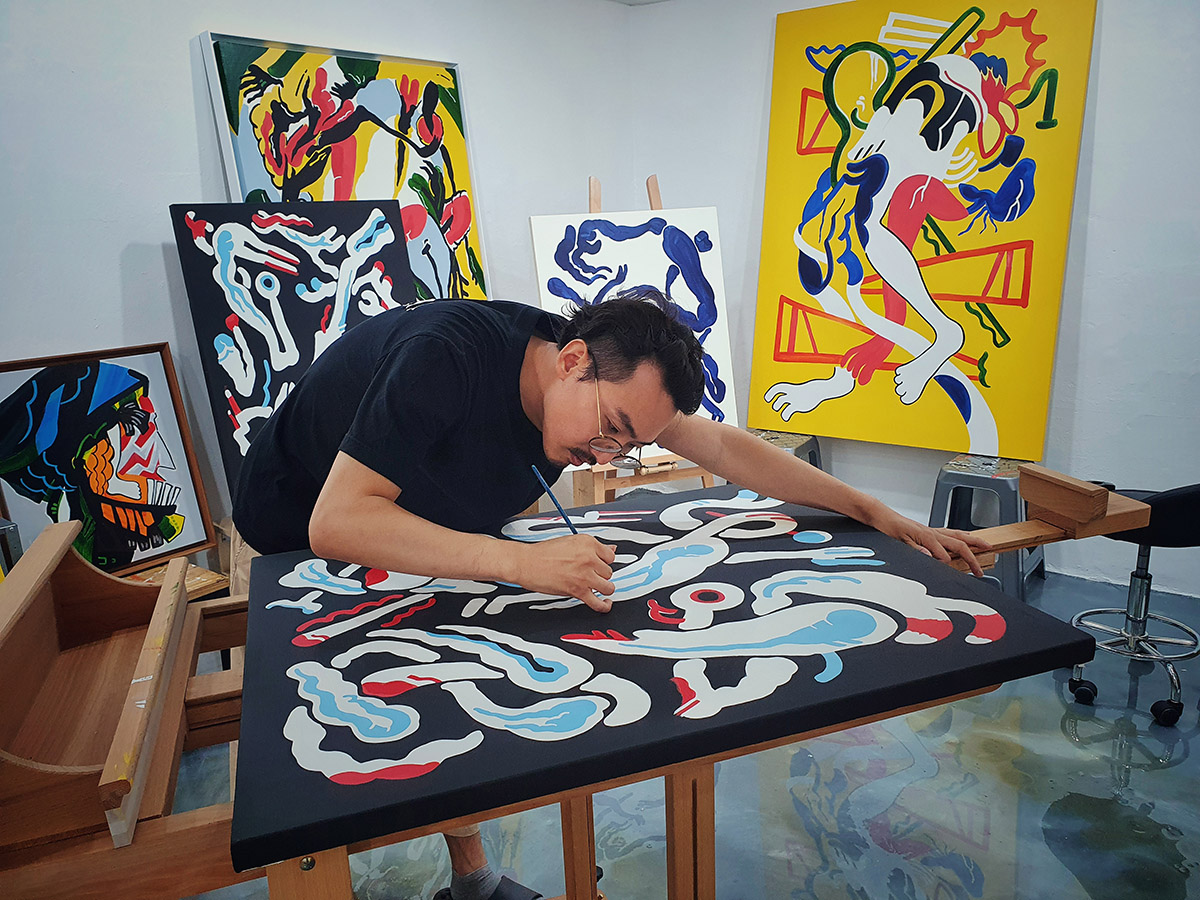
Any plans for the rest of 2020?
I will spend all the time I have to improve my work. In December, I am participating in the 2020 Seoul Art Show convention held at Coex. Later in March 2021, I am expected to hold a quite large exhibition at the Jin-san Gallery. The direction of my future work is set, so I will focus on them solely. My Instagram account is gathering more and more followers and they seem to be more active these days, so I am also looking for opportunities abroad. It would be a pleasure if my work can be shown abroad as well.
Jun-won Lee – www.leejunwon.com
































